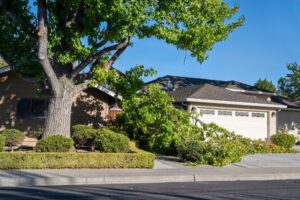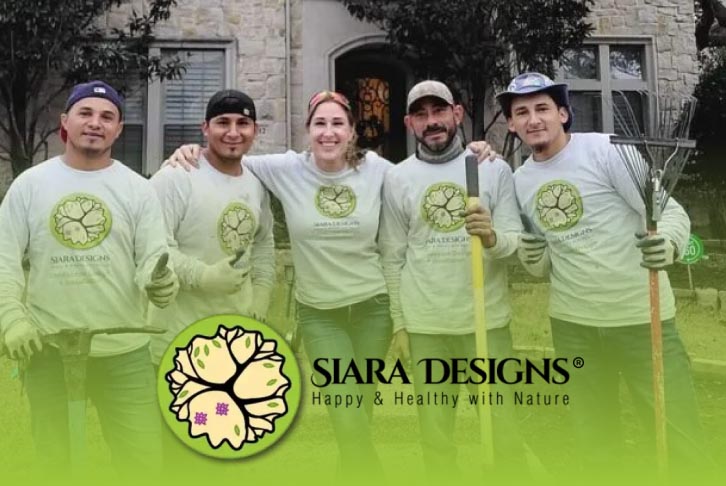
Trees take decades to grow and mature. They are often planted in honor or memory of people and pets we love, giving us comfort as a long-lasting part of nature. Trees conjure childhood memories and often serve as the canopies of family reunions, friendship gatherings, and weddings. When the health of a tree begins to change, it is vital to assess its needs and be proactive in its care.
If you are unsure of how to tell if a tree is dead, dying, or dormant, you need the experienced North Texas landscaping design providers at Siara Designs. They can diagnose the health of a tree to avoid cutting down a tree unnecessarily or leaving it in place too long. Our team provides the critical care your trees need, including trimming, relocating, and removal.
Get in Touch with the Seasons to Recognize Dormant Phases
One of the first warning signs of a tree in danger comes from the seasons. If a tree appears leafless or the needles are shedding, notice what other trees and plants in your yard are doing at that time of the year. If they are budding, leafing out, or displaying signs of new growth, then it is time to reach out for help for a potentially dead or dying tree.
Many trees, except for evergreens and semi-deciduous trees, lose all of their foliage during the fall and winter months, entering a period of dormancy to conserve energy through the coldest months of the year. If leaf or needle shedding occurs outside of this time, a tree may be dying or experiencing the effects of a disease, parasite, or infestation. Live oaks sporadically lose leaves on a different seasonal calendar, dropping their leaves in the late winter or early spring when temperatures rise, making them appear unhealthy when they are actually experiencing new growth.
Noticing subtle changes before a tree’s health declines too dramatically to be saved is optimal, and utilizing the knowledge of our team of experts providing tree services in North Texas is a great place to start. One of the benefits of regularly working with Siara Designs for your landscaping, tree, shrub, and yard services is our ability to detect issues before they progress. We understand the value of trees and their benefits to the ecosystems around your home or business and strive to protect them through healthy practices that encourage growth.
Signs to Look for When a Tree Is Dying
Like people, trees display signs that indicate health problems. If only they could tell us they were not well, noticing a dying tree and giving it the care it needs to recover would be more straightforward. Since this is not the case, recognizing these signs of a dying tree lets you take steps to save a tree before losing it from your landscape after years of beauty and growth.
Shedding Bark
The bark of a tree serves as its outer armor from injury, retains a tree’s water, and shields it from disease and insect infestation. Many trees in the North Texas area have exfoliating bark that sheds during certain seasons of the year, like crepe myrtle, silver maples, and sycamore. However, when a tree sheds bark, it may be an immediate sign that a tree needs care.
Shedding bark can be a symptom of a lack of nutrients. Yet, it can also result from infection from disease. A disease can impact a single tree and spread to other trees in your yard, like a ripple effect across the landscape.
Open or Seeping Wounds
Open wounds on a tree are the perfect entry point for harmful parasites, bugs, and diseases such as fungi or viruses. These wounds can occur from various injuries. Utilizing Siara Designs tree trimming services in North Texas allows for precise cutting methods during trimming to protect from damaging wounds.
Some trees will ooze sap occasionally, but understanding whether this is normal or an indicator of infestation or sickness is imperative. If you notice leaking liquid from a tree or an open wound, it should be addressed immediately to maintain the tree’s integrity.
Twigs and Broken Sticks Surrounding a Tree
Downed twigs and noticeably dropping branches are clear indicators that a tree may be dying. A tree’s branches, when healthy, are flexible. Look around the base of other trees to gain insight into what appears to be normal shedding, but when a noticeable amount of debris is present, it is an alert that a tree needs help promptly.
Additionally, you may notice brittle branches that break easily during inclement weather or in light winds. Unfortunately, brittle branches can signify a tree is dead or beyond healing. These are only a few signs a tree may be dying, so let our expert landscaping designers in North Texas help you protect the trees in your landscape.
Recognizing Dead Trees
Dead trees are apparent, and losing a reliable landscape fixture is heartbreaking. Address dead trees to protect the safety of structures, such as your home and garage. In addition, a dead tree can also harm the people who walk under it.
Dead trees will be bare of foliage or needles, may have shed their bark, and will have limbs and broken sticks around them. Under the bark, a dead tree will not show any sign of the green molecules, known as chlorophyll, that are present in a living tree. Our tree experts in North Texas can safely remove your dead tree to prevent further damage.
Our North Texas Tree Knowledge and Resources Protects Your Assets
Siara Designs proactively protects your landscape and addresses dying or dead trees. We also work to enrich the health of your trees during dormant seasons, when they require rest to prepare for more fertile times. Our services included the following areas:
Contact us for a consultation request to schedule your tree services or discuss your landscaping vision. The health of your trees matters to your home and community, and we provide nurturing care to make your landscape thrive.

